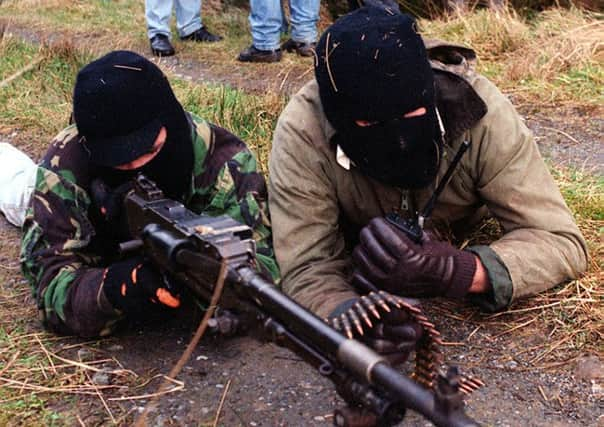Victim opens up on how IRA ethnic cleansing gang targeted his home


Veteran republican Colm Murphy - who was convicted and later cleared on appeal of the Omagh bomb atrocity - last month revealed IRA border plans for ethnic cleansing in south Armagh in the 1970s.
The republican told the Irish News there had been a plan to “rid the area of unionists by targeting high profile people and burning them out”.
Advertisement
Hide AdAdvertisement
Hide AdOne border Protestant has now told the News Letter that his family suffered just this sort of intimidation in the 1970s.
“I was only 15,” he said. “My father was coming home from work and the boys [IRA] were sitting in our lane waiting for him. They walked him in at gunpoint.”
He and his 10-year-old sister went out to meet his father as normal - he usually had sweets for them.
“We met him in our lane with six gunmen with him - all masked,
Advertisement
Hide AdAdvertisement
Hide Ad“They said to us, ‘if you run we will shoot you’, so we walked in with them. They had a gun stuck at dad’s back.”
In those days the IRA launched attacks on the same day every week. His father used to say: ‘I wonder who is going to be shot this Thursday?’
They took the family hostage for two hours, waiting for his brother - a part-time UDR member - to return.
His father protested as they ransacked the house and the leader shouted: ‘You shut your mouth.’ The IRA man stuck the gun into his father’s mouth.
Advertisement
Hide AdAdvertisement
Hide AdAlthough masked, the family knew it was local IRA commander Michael McVerry as he had only one hand - he lost the other in a premature bomb.
“My mammy said ‘Don’t be shooting him - he is the only one to look after us’. McVerry replied: ‘Well we will shoot the boy instead, Maybe this boy is in the UDR too.’
“Then he started to beat me with the butt of his gun and started kicking me.”
His mother lay on him to protect him.
He went on: “McVerry said: ‘Don’t you worry. You are going to be out of this part of the country.’ My father replied: ‘No way will I be moving.’
Advertisement
Hide AdAdvertisement
Hide Ad“They took UDR uniforms and smashed every light and every piece of furniture we had.”
As they left, the IRA gang saw a car coming round the corner which appeared to be the boy’s brother’s. They opened fire and the driver was killed - however it turned out to be an elderly neighbour.
His parents suffered depression, strokes and heart disease. He himself suffered a heart attack at 37.
“It was all stress-related. Nobody knows the pressure we were under.
Advertisement
Hide AdAdvertisement
Hide Ad“They came back and shot the house up a year later. Our neighbour got his throat cut.
“People kept well out of the road. They did not travel at night. They only left the house to worship or get groceries. We were not free to do what we wanted. It was awful.
“Now I still have mental health problems - and they tell me I am fit to work. They should leave victims like us to live in peace with pensions.”
Veteran republican Colm Murphy claimed the IRA planned to “ethnically cleanse” unionists from south Armagh if there was retaliation after the Kingsmills massacre in 1976.
Advertisement
Hide AdAdvertisement
Hide AdThat atrocity saw the IRA shoot 10 Protestant civilians amid spiralling sectarian tit-for-tat murders.
“The plan was to rid the area of unionists by targeting high profile people and burning them out, that would have been well known at the time,” Murphy told the Irish News last month. Asked if this meant “ethnically cleansing” the area, he said “yes”.
The plan was called off amid fears of further retaliation by loyalists against Catholics, he claimed.
But UUP MLA Danny Kennedy responded that it was “long suspected that the systematic attacks on the Protestant community along the border were part of a co-ordinated campaign”.